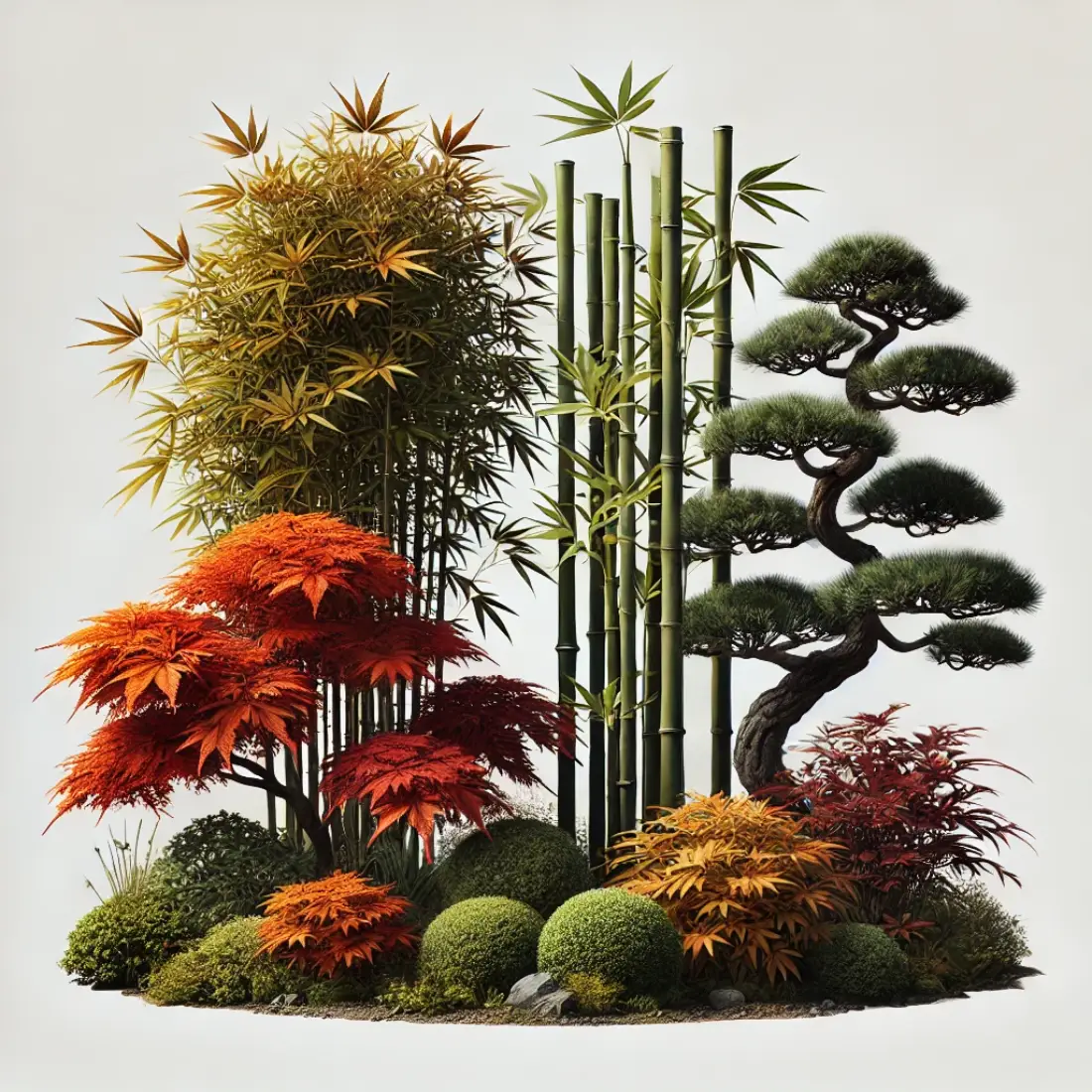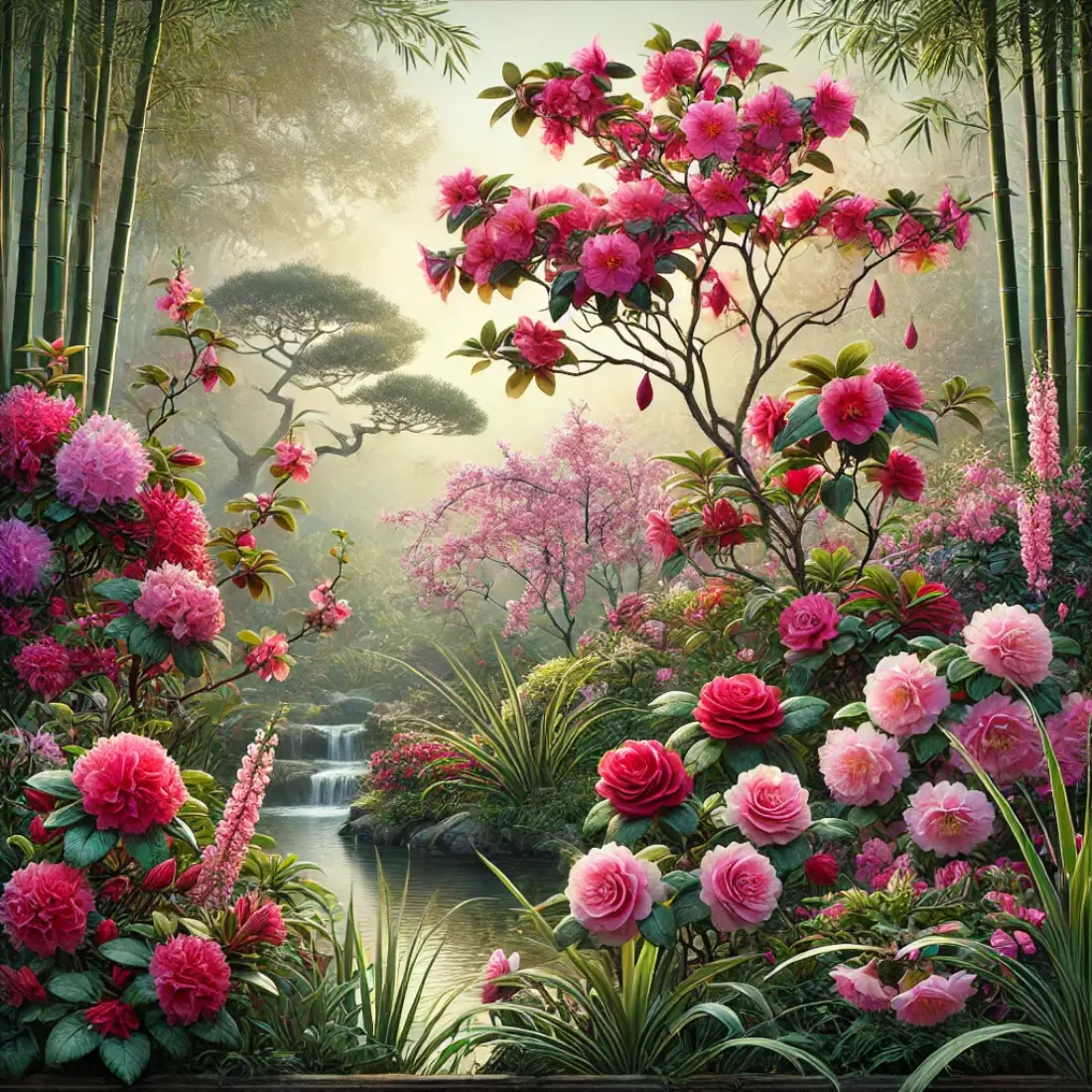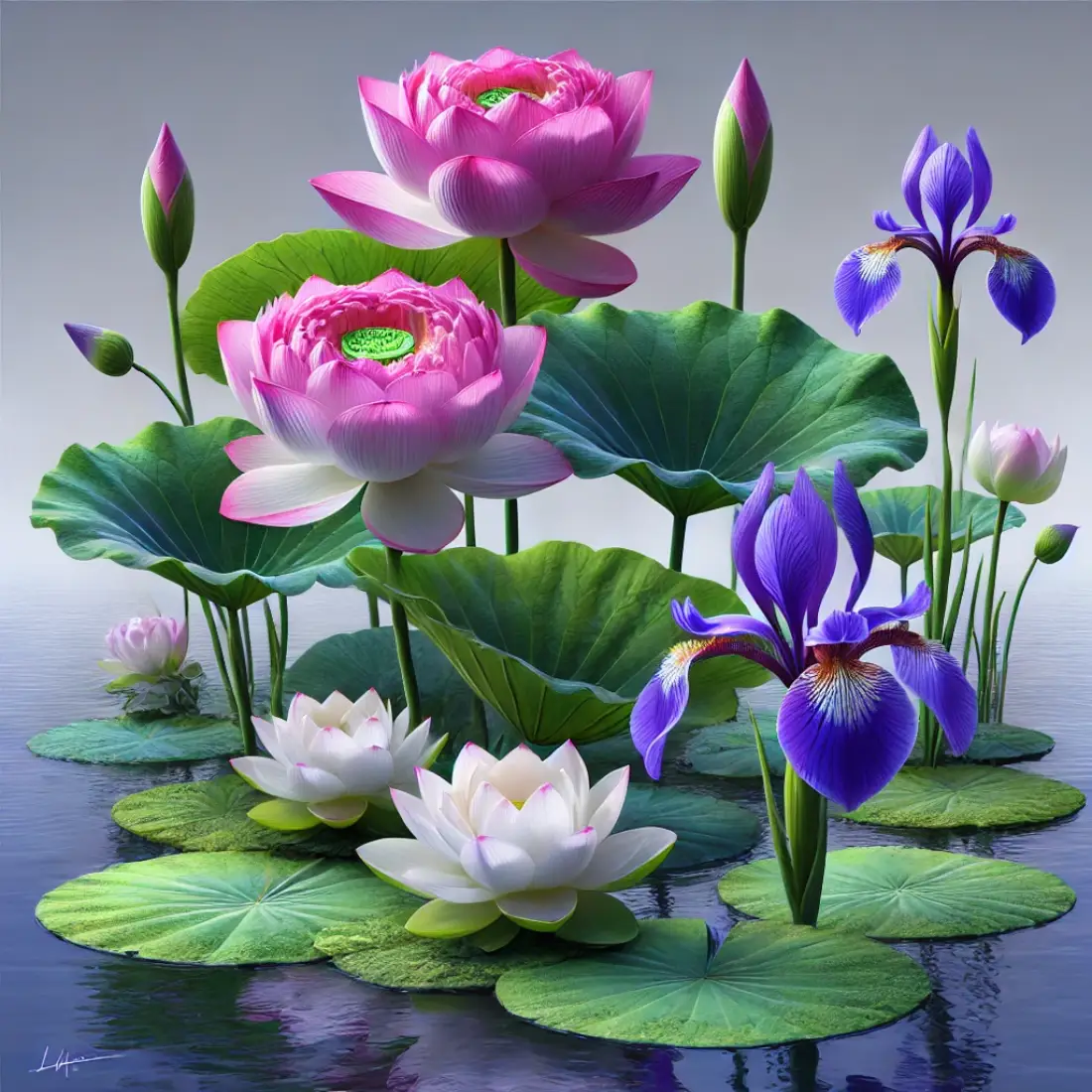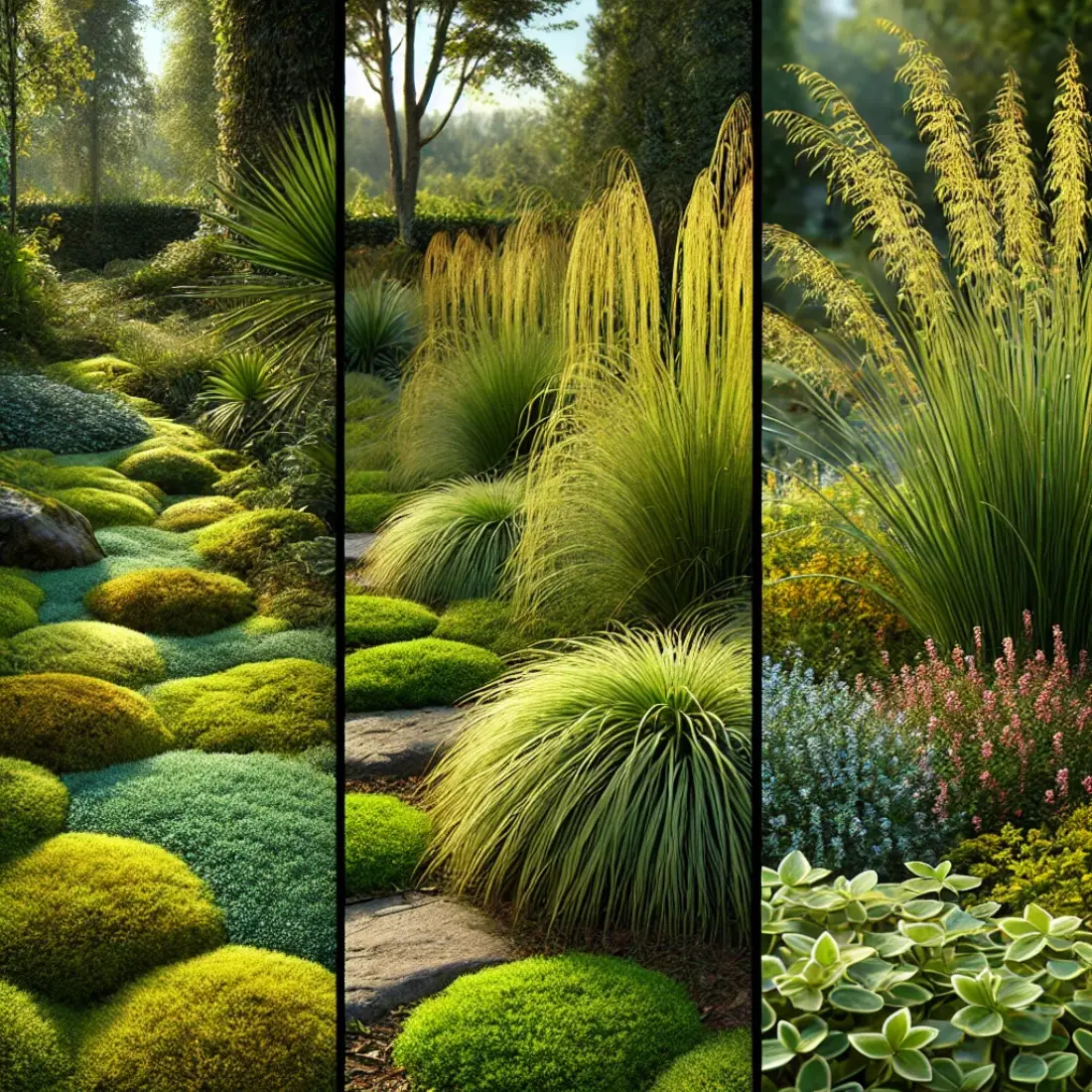Designing a Japanese garden is an art that intertwines nature, culture, and tranquility. The selection of plants for a Japanese garden plays a crucial role in achieving the serene and harmonious ambiance these gardens are renowned for.
- Choosing the right plants is crucial for an authentic Japanese garden.
- Focus on simplicity, natural beauty, and tranquility.
- Prefer evergreen plants for year-round appeal.
- Mix trees, shrubs, flowering plants, ground covers, and aquatic plants for layers and interest.
- Iconic choices: Japanese Maples, Bamboo, Japanese Black Pine.
- Seasonal color from Azaleas, Camellias, Cherry Blossoms.
- Use moss and Japanese Forest Grass for lush ground cover.
- Add Lotus and Water Iris to ponds for beauty and symbolism.
- Select plants suited to your climate for a sustainable garden.
Traditional Elements of a Japanese Garden
A Japanese garden embodies the essence of natural beauty, tranquility, and harmony. Traditional elements are meticulously chosen to create a serene and contemplative space.
Water: Water features such as ponds, streams, and waterfalls symbolize purity and life. They create soothing sounds and reflect the surrounding plants and sky, enhancing the garden’s peaceful ambiance.
Stones: Stones and rocks represent stability and permanence. They are strategically placed to mimic natural landscapes, forming pathways, bridges, and focal points. Gravel and sand, often raked into patterns, symbolize water and add to the minimalist aesthetic.
Plants: Plant selection is crucial for achieving the desired atmosphere. Evergreen plants like Japanese Black Pine and Bamboo provide year-round structure, while seasonal flowers like Cherry Blossoms and Azaleas offer changing beauty. Moss and ground covers add lush greenery and texture.
Structures: Elements such as lanterns, tea houses, and gates introduce cultural significance and architectural interest. They serve as focal points and enhance the garden’s traditional feel.
Balance and Simplicity: Japanese gardens emphasize asymmetry, balance, and simplicity. Every element is thoughtfully placed to create a harmonious and natural look, inviting meditation and reflection.

Trees and Shrubs
Japanese Maples (Acer palmatum): Renowned for their delicate, lacy leaves and vibrant fall colors, Japanese Maples are a staple in Japanese gardens. Varieties like ‘Bloodgood’ and ‘Butterfly’ offer different hues and forms, adding elegance and seasonal interest. These trees thrive in well-drained soil and partial shade, making them versatile and adaptable.
Bamboo (Bambusoideae): Bamboo is valued for its fast growth, versatility, and strong vertical presence. It can be used as a natural screen, creating privacy and a sense of enclosure. Varieties like Black Bamboo and Golden Bamboo provide unique visual contrasts. Bamboo requires careful maintenance to control its spread, ensuring it doesn’t overpower the garden.
Japanese Black Pine (Pinus thunbergii): This iconic tree is known for its rugged, windswept appearance, often shaped through meticulous pruning. Its dark green needles and textured bark add structure and depth to the garden. Japanese Black Pine is hardy and drought-tolerant, symbolizing resilience and endurance.

Flowering Plants
Azaleas (Rhododendron): Azaleas are cherished for their vibrant spring blooms, ranging from pink and red to white and purple. They thrive in acidic soil and partial shade, making them ideal for Japanese gardens. Varieties like Kurume and Satsuki add striking color and contrast, enhancing the garden’s seasonal beauty.
Camellias (Camellia japonica): Known for their lush, glossy foliage and stunning flowers, Camellias bloom in late winter to early spring. Their flowers, available in shades of red, pink, and white, provide a welcome splash of color during the colder months. They prefer well-drained, acidic soil and sheltered locations.

Cherry Blossoms (Prunus serrulata): Cherry Blossoms, or Sakura, are iconic in Japanese culture, symbolizing the fleeting beauty of life. Varieties like ‘Somei Yoshino’ and ‘Shirotae’ produce delicate pink or white blooms in spring, creating breathtaking displays. These trees thrive in well-drained soil and full sun.
Lotus (Nelumbo nucifera): The Lotus is a revered aquatic plant in Japanese gardens, symbolizing purity and enlightenment. Its large, showy flowers bloom in summer, floating gracefully on pond surfaces. Lotus plants require still, shallow water and plenty of sunlight to thrive.
Water Iris (Iris laevigata): Known for its striking blue or purple flowers, the Water Iris adds vibrant color to garden ponds. This plant thrives in shallow water or damp soil, blooming in late spring to early summer. It’s low-maintenance and provides a beautiful focal point in aquatic settings.

Ground Covers and Moss
Moss (Bryophyta): Moss is a fundamental element in Japanese gardens, symbolizing age and tranquility. It creates a lush, green carpet that softens the landscape and adds a serene ambiance. Common types include Sheet Moss and Rock Cap Moss, both thriving in shaded, moist areas. Moss requires minimal maintenance and helps to retain moisture in the soil, enhancing the overall health of the garden.
Japanese Forest Grass (Hakonechloa macra): This ornamental grass, also known as Hakone Grass, features cascading blades that bring a flowing, elegant look to the garden. Varieties like ‘Aureola’ display vibrant yellow and green stripes, adding visual interest. Japanese Forest Grass thrives in partial shade and well-drained soil, making it perfect for planting under trees or along pathways.
Creeping Thyme (Thymus serpyllum): This low-growing herb forms dense mats of tiny, aromatic leaves and pink or purple flowers. It thrives in sunny areas with well-drained soil, providing a fragrant and attractive ground cover that attracts pollinators.

FAQs about the Plants for a Japanese Garden
What are the essential plants for a Japanese garden?
Essential plants include Japanese Maples, Bamboo, Japanese Black Pine, Azaleas, Camellias, Cherry Blossoms, Moss, and Lotus. These plants provide the necessary structure, color, and tranquility typical of a Japanese garden.
How do I maintain the plants in a Japanese garden?
Maintenance involves regular pruning, especially for trees like Japanese Maples and Bamboo, to maintain their shape. Ensure proper watering, particularly for moss and aquatic plants. Use mulch to retain soil moisture and consider soil acidity for plants like Azaleas and Camellias.
Can I grow Japanese garden plants in my region?
Many Japanese garden plants can adapt to various climates, but it’s essential to choose plants suited to your local conditions. Consult local gardening experts to select the best varieties for your region.
What type of soil is best for Japanese garden plants?
Japanese garden plants typically prefer well-drained, slightly acidic soil. Incorporating organic matter like compost can improve soil structure and fertility, supporting healthy plant growth.
How can I incorporate water features in a Japanese garden?
Water features like ponds, streams, and waterfalls are integral to Japanese gardens. Use natural stones to create realistic edges, and include aquatic plants like Lotus and Water Iris to enhance the water feature’s beauty.
What role do stones and gravel play in a Japanese garden?
Stones and gravel symbolize stability and permanence. They are used to create pathways, bridges, and focal points. Gravel, often raked into patterns, represents water and adds to the minimalist aesthetic of the garden.
How do I create a balanced and harmonious Japanese garden design?
Balance and harmony are achieved through asymmetry and careful placement of elements. Use a mix of trees, shrubs, flowering plants, and ground covers. Ensure that each element complements the others, creating a natural and cohesive look.
Are there any specific design principles to follow in a Japanese garden?
Yes, key principles include simplicity, natural beauty, and a sense of tranquility. Emphasize asymmetry, balance, and the thoughtful placement of plants, stones, and water features to create a serene and harmonious environment.
What are some common mistakes to avoid when creating a Japanese garden?
Common mistakes include overcrowding plants, neglecting maintenance, and using overly bright or showy plants. Focus on simplicity and balance, and choose plants that fit the garden’s serene and natural aesthetic.
How can I add seasonal interest to my Japanese garden?
Include a variety of plants that bloom in different seasons. Cherry Blossoms and Azaleas provide spring color, while Lotus blooms in summer. Japanese Maples offer stunning fall foliage, and Camellias bloom in winter, ensuring year-round interest.







